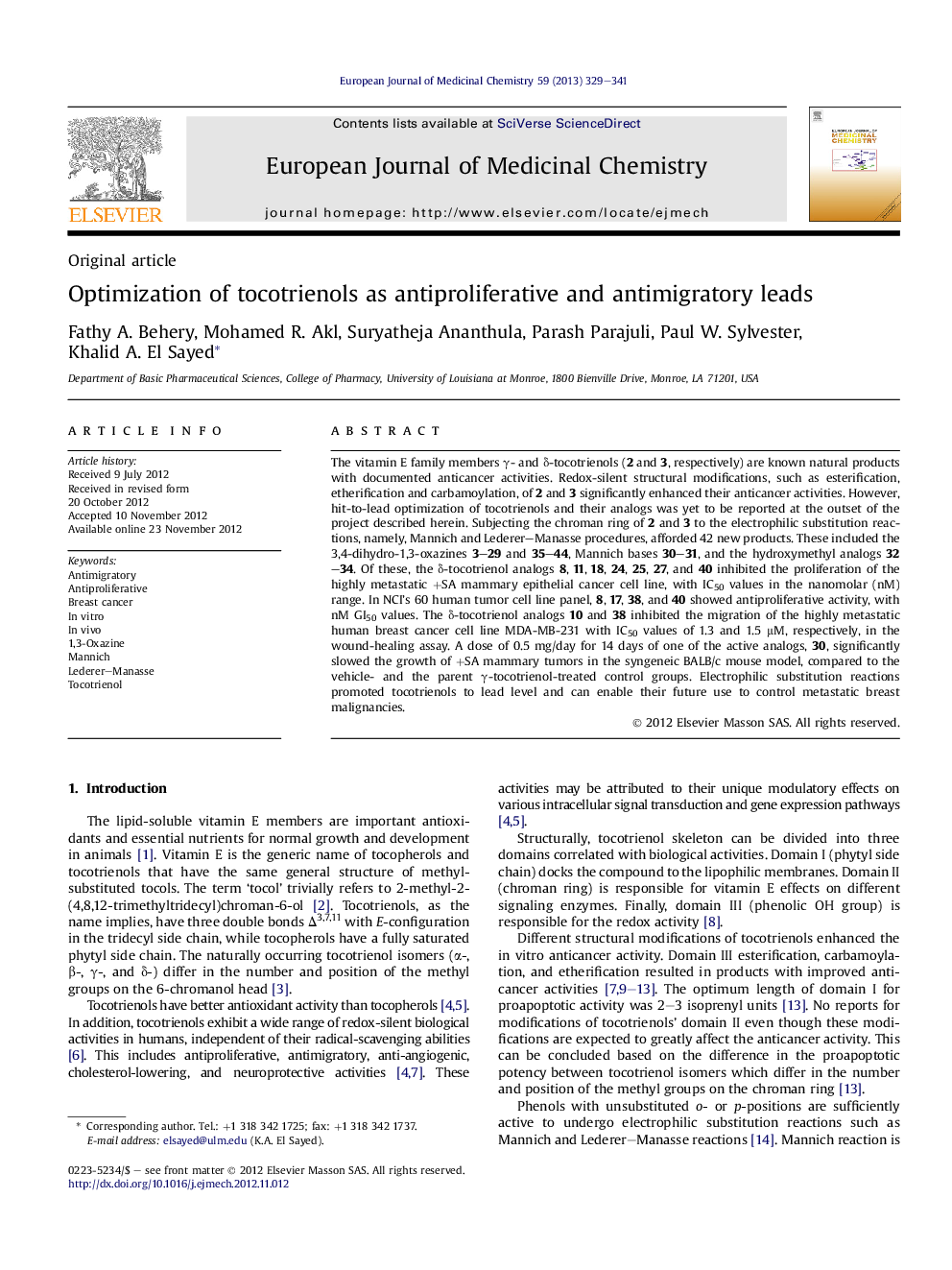| کد مقاله | کد نشریه | سال انتشار | مقاله انگلیسی | نسخه تمام متن |
|---|---|---|---|---|
| 1394409 | 1501157 | 2013 | 13 صفحه PDF | دانلود رایگان |

The vitamin E family members γ- and δ-tocotrienols (2 and 3, respectively) are known natural products with documented anticancer activities. Redox-silent structural modifications, such as esterification, etherification and carbamoylation, of 2 and 3 significantly enhanced their anticancer activities. However, hit-to-lead optimization of tocotrienols and their analogs was yet to be reported at the outset of the project described herein. Subjecting the chroman ring of 2 and 3 to the electrophilic substitution reactions, namely, Mannich and Lederer–Manasse procedures, afforded 42 new products. These included the 3,4-dihydro-1,3-oxazines 3–29 and 35–44, Mannich bases 30–31, and the hydroxymethyl analogs 32–34. Of these, the δ-tocotrienol analogs 8, 11, 18, 24, 25, 27, and 40 inhibited the proliferation of the highly metastatic +SA mammary epithelial cancer cell line, with IC50 values in the nanomolar (nM) range. In NCI's 60 human tumor cell line panel, 8, 17, 38, and 40 showed antiproliferative activity, with nM GI50 values. The δ-tocotrienol analogs 10 and 38 inhibited the migration of the highly metastatic human breast cancer cell line MDA-MB-231 with IC50 values of 1.3 and 1.5 μM, respectively, in the wound-healing assay. A dose of 0.5 mg/day for 14 days of one of the active analogs, 30, significantly slowed the growth of +SA mammary tumors in the syngeneic BALB/c mouse model, compared to the vehicle- and the parent γ-tocotrienol-treated control groups. Electrophilic substitution reactions promoted tocotrienols to lead level and can enable their future use to control metastatic breast malignancies.
Figure optionsDownload as PowerPoint slideHighlights‣ Tocotrienols electrophilic substitutions produced 3,4-dihydro-1,3-oxazines. ‣ They showed improved (nM level) antiproliferative and antimigratory activities. ‣ The 3,4-dihydro-1,3-oxazine ring & N-3″ substituent are important pharmacophores. ‣ Degree of chroman ring methylation also significantly affect anticancer activity. ‣ Analogs showed potent activity in syngeneic BALB/c mouse model.
Journal: European Journal of Medicinal Chemistry - Volume 59, January 2013, Pages 329–341